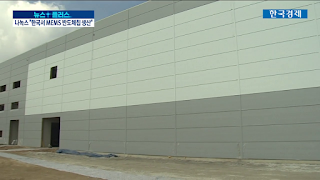Nanox Chairman (and soon to be former CEO) lies to the Korean press again, inflating chip production estimates by 30x in the temporary "plant" and by 9x in the future "fab:"
The Cheongju plant has a partial production capacity of 300 wafers per month, and can produce 50-150 chips per wafer depending on the product line. Chairman Poliakine added, “The clean room size for semiconductor production will also be expanded to more than three times that of the Cheongju plant.” [google translated]
His statement contradicts the slides from the investment presentation at Jefferies on June 4.
Specifically, the temporary "clean room," which is not clean at all and located in an equipment parts manufacturing plant, was supposed to have a maximum capacity of 1,000 chips per month, not the 15,000-45,000 (300 x 50-150) he told the Korean press. Similarly, he lied about the new fab, when he said production will be more than 3x, implying over 45,000-135,000 chips a month, while the investor presentation said 10,000 chips a month at full capacity.
Weren't Koreans supposed to be good at math?
By the way, those chips are neither semiconductor (they are supposed to use small molybdenum pins, not semiconductors) nor MEMS (there is nothing mechanical about them), and they are not functional. Here is a snapshot again from the August Business Update proving that the temporary "clean room" is not clean at all, showing the chips all covered with dust specs everywhere.
The article also repeats the lies perpetuated by Nanox investor, Yozma group:
Nanox is a company that manufactures X-rays that can reduce radiation exposure time by one-half by shooting images with clearer quality than existing X-rays at 30 times faster. Its size and weight are one-fifth of that of existing devices, so it can be used in small hospitals and medical blind spots.
All of the statements in the paragraph above are intentionally misleading. As the 510(k) summary revealed, Nanox' tube is nothing more than an used and abused (and severely underperforming) dental x-ray tube that is underpowered and slow. Nanox proposed devices are obviously larger than the portable x-ray devices that it underperforms.
 |
| A handheld x-ray device by Vatech Korea |
Update: A slightly different version of the same article also quotes the upcoming CEO, who was kicked out of his Chairman position at Hadassah Medical Center last year (he was also on the Board of Nanox when Nanox signed a suspect agreement with Hadassah):
New CEO Erez Meltzer said, “Once the acquisition of Zebra Medical is completed, we can create next-generation medical devices with imaging AI solutions. Zebra's AI and cloud can form a new AI-assisted diagnostic space," he said. "New cooperation opportunities are always welcome."
The new CEO will not be much different from the old CEO, based on the statement above. Zebra's AI simply does not work with the proposed Nanox.Arc - the reason is simple - Zebra's AI has been trained on regular x-ray images, while there is nothing regular about the proposed Nanox.Arc. For example, the chest images that Zebra has utilized must be standard standing/sitting erect PA at a sufficient distance from the x-ray source, while all the proposed Nanox.Arc can produce is an underexposed, close-range supine AP (and it is a good bet Zebra has no chest tomosynthesis training images whatsoever). Maybe Zebra's team can deliver a miracle, eventually, but only after thousands of the proposed Arcs have been deployed and fully utilized and many, many years.















